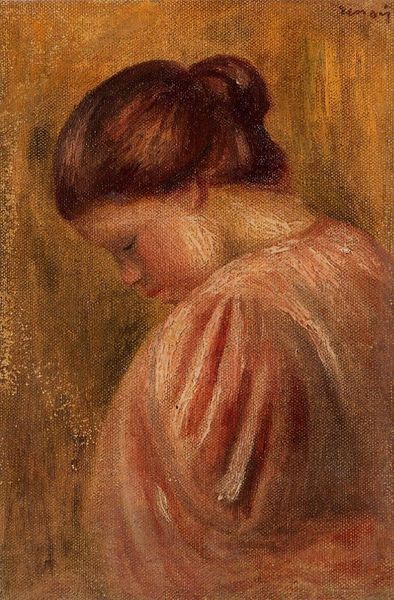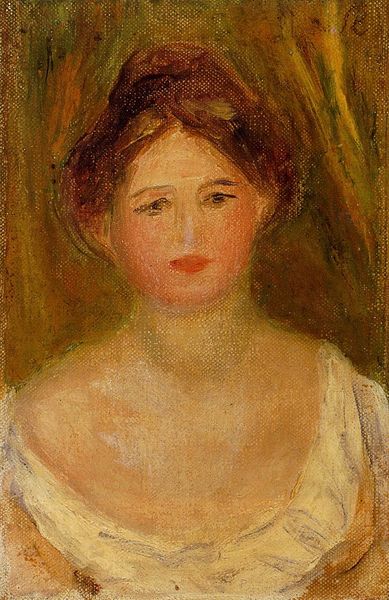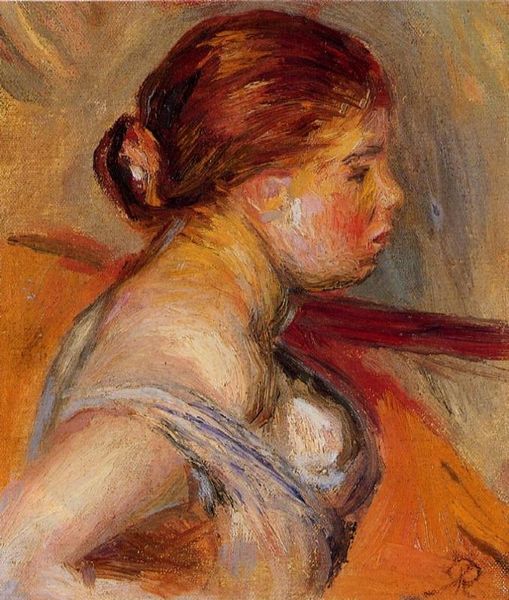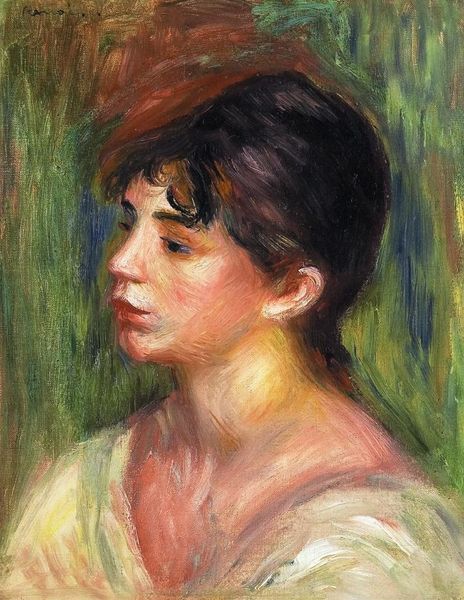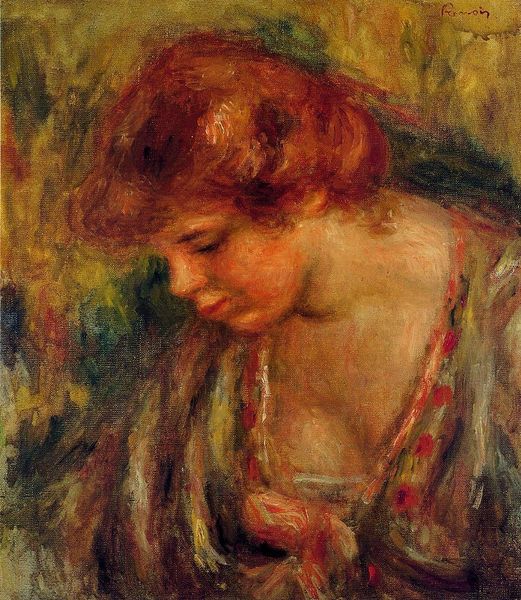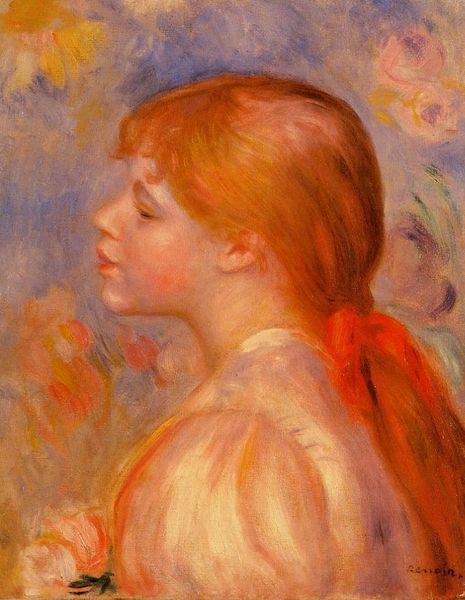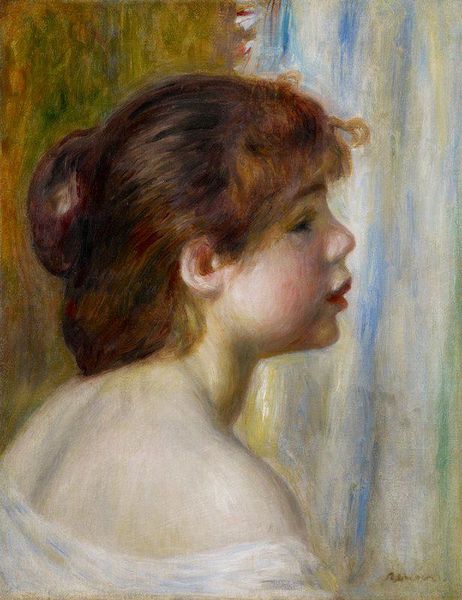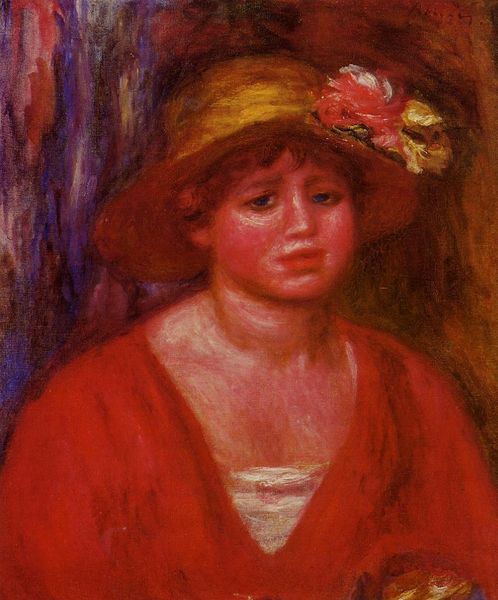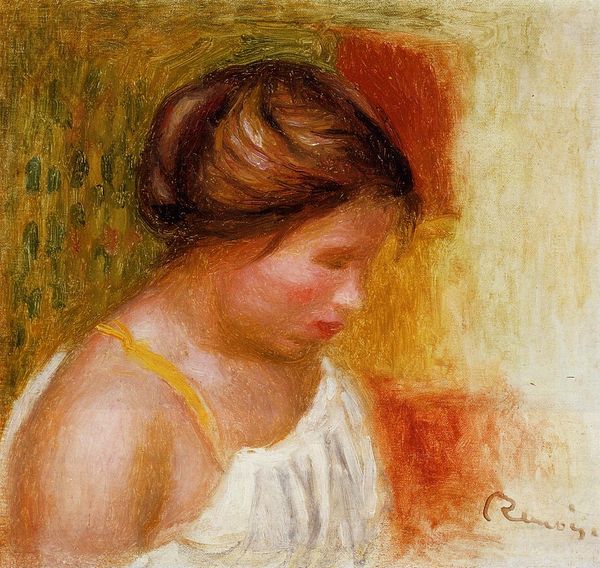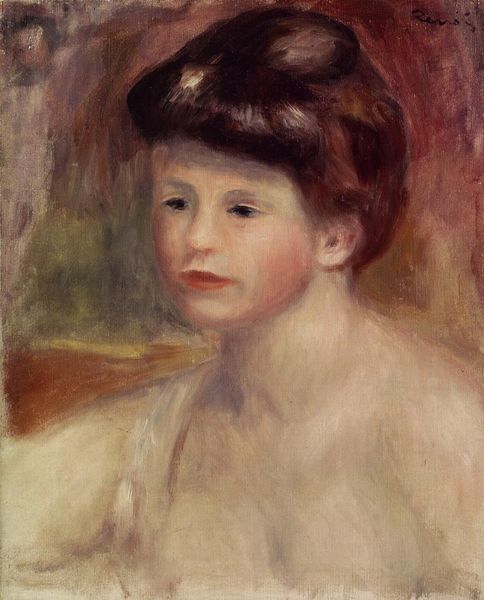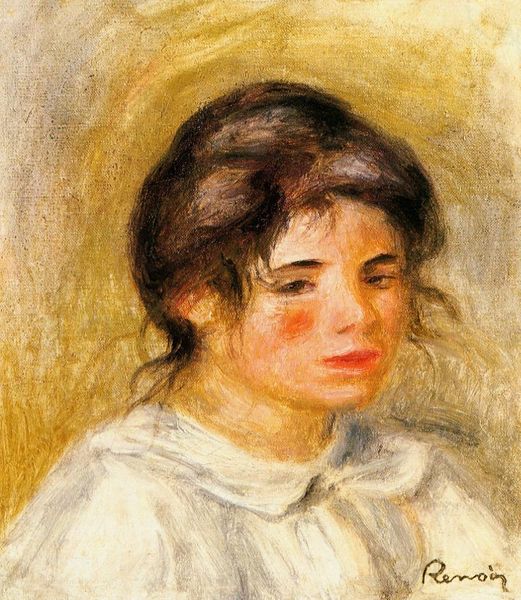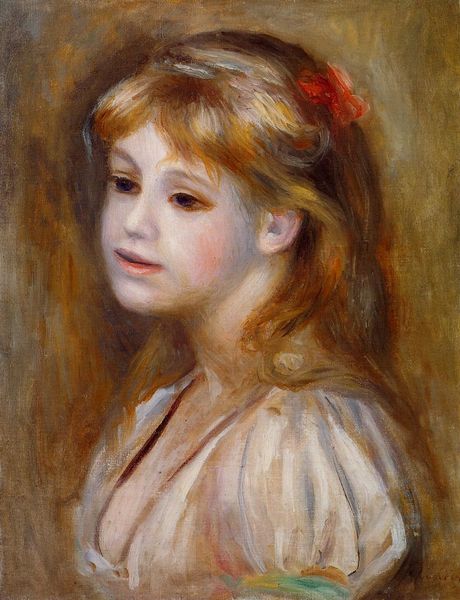
Copyright: Public domain
Curator: Standing before us is Renoir’s “Woman’s Head,” painted in 1905. He captured this intimate figuration with his signature Impressionist style, using oil paints, as always. Editor: Oh, this piece just radiates tenderness. There's something so gentle and subdued in her expression, a kind of melancholic beauty. The loose brushwork makes it feel almost dreamlike, don't you think? Curator: Absolutely! It is exactly that soft focus which adds to this feeling. When looking closer, I always find myself lost in observing how he built form with layers of brushstrokes. It’s incredible, seeing how he builds up light and shadow, isn’t it? Editor: Well, yes, but consider this—that very application, the process of layering pigment on linen, was deeply embedded in the emerging commercialism of the early 20th century. Each brushstroke a tiny transaction, the product of readily available paints manufactured on an industrial scale. The artist’s hand, romanticized, obscures a network of labor and extraction. Curator: A melancholy I suppose… that the tools themselves reflect social shifts? However, perhaps there’s also a personal narrative here. I cannot but help reading into it a certain reflectiveness… Editor: It’s more than a social shift; it's a material one, the foundation upon which Impressionism thrived. Before, artists had to grind their own pigments, a painstaking process! But now…it all feels a little bit commodified? Curator: Commodification may be a symptom here. Ultimately, she looks at peace despite everything she has endured in her lifetime. And to put it this way is a privilege of the 21st century, not of her time. It reminds us how everything that survives tells a story about itself. Editor: Perhaps it’s also about re-evaluating how we value art. To challenge the notion that the unique "genius" is solely responsible for an artwork, acknowledging the network of industry that sustains its very existence and, if lucky, permanence. Curator: Precisely. It becomes more than a painted head, it embodies and reminds us of these conversations about light, material and social shifts that echo from its canvas to our own present. Editor: Yes. I appreciate your approach to viewing the painting! The interplay of individual expression and historical context is absolutely something to consider when engaging with “Woman’s Head” again.
Comments
No comments
Be the first to comment and join the conversation on the ultimate creative platform.
